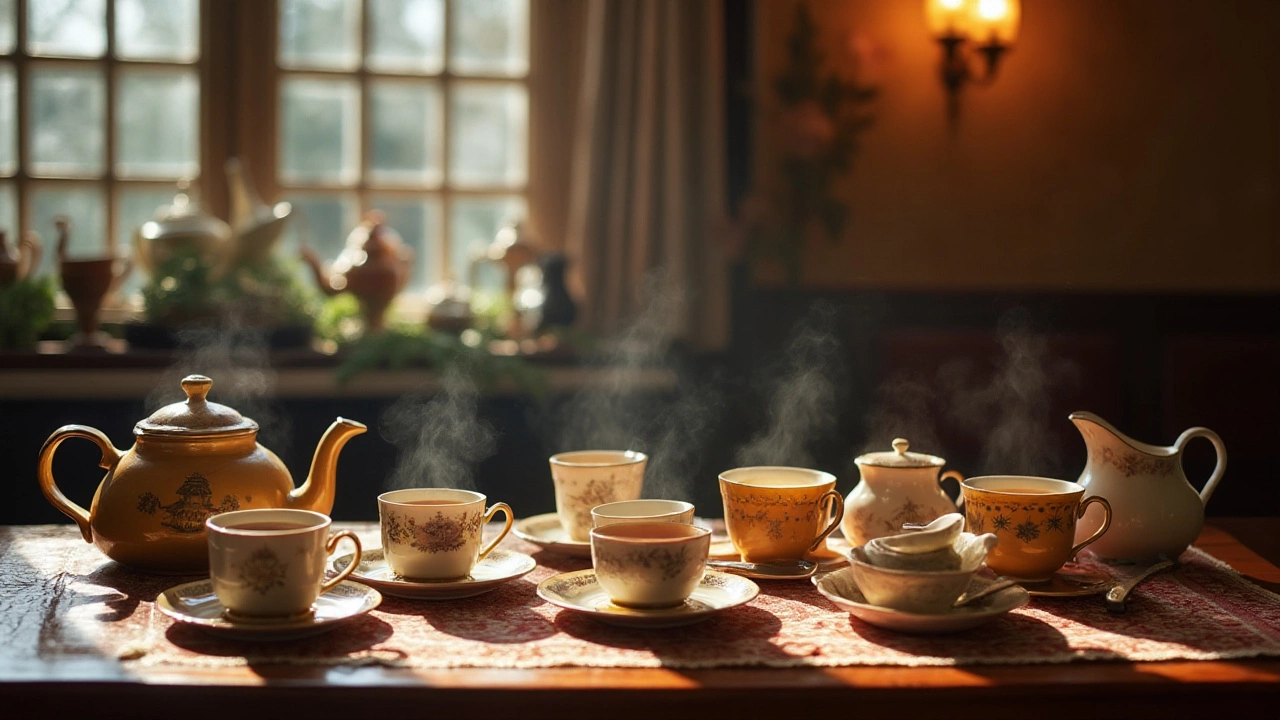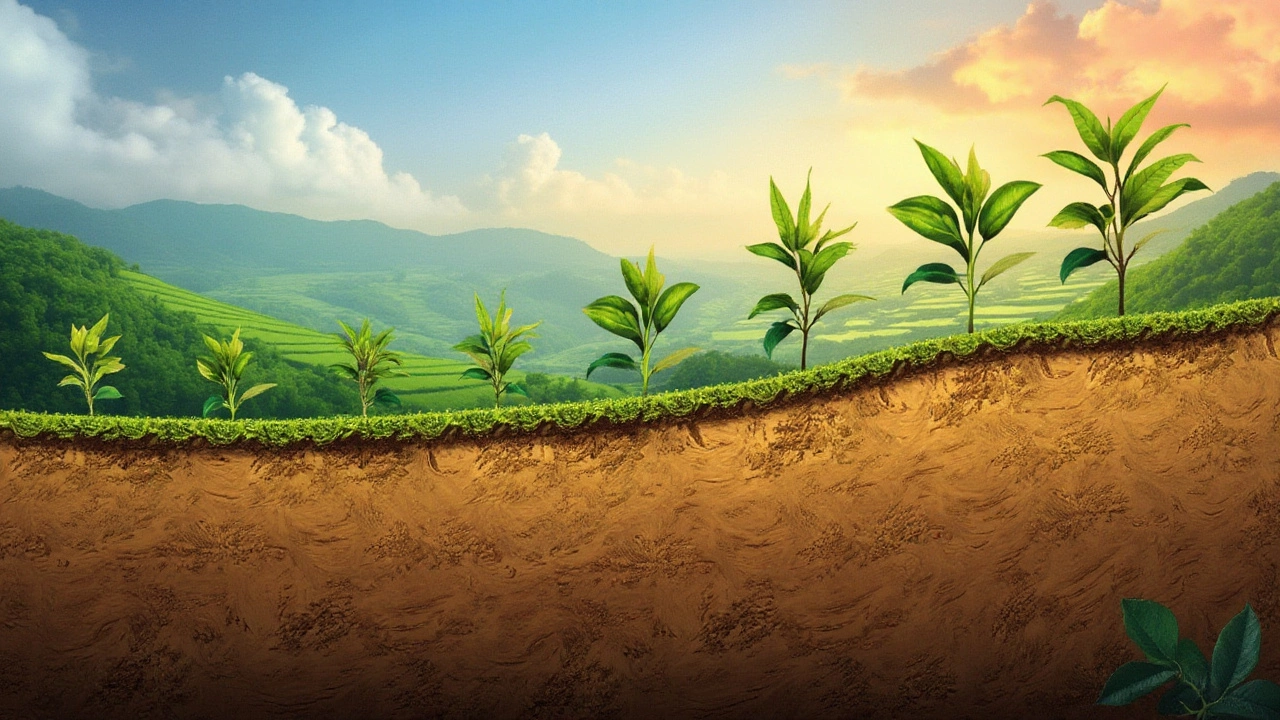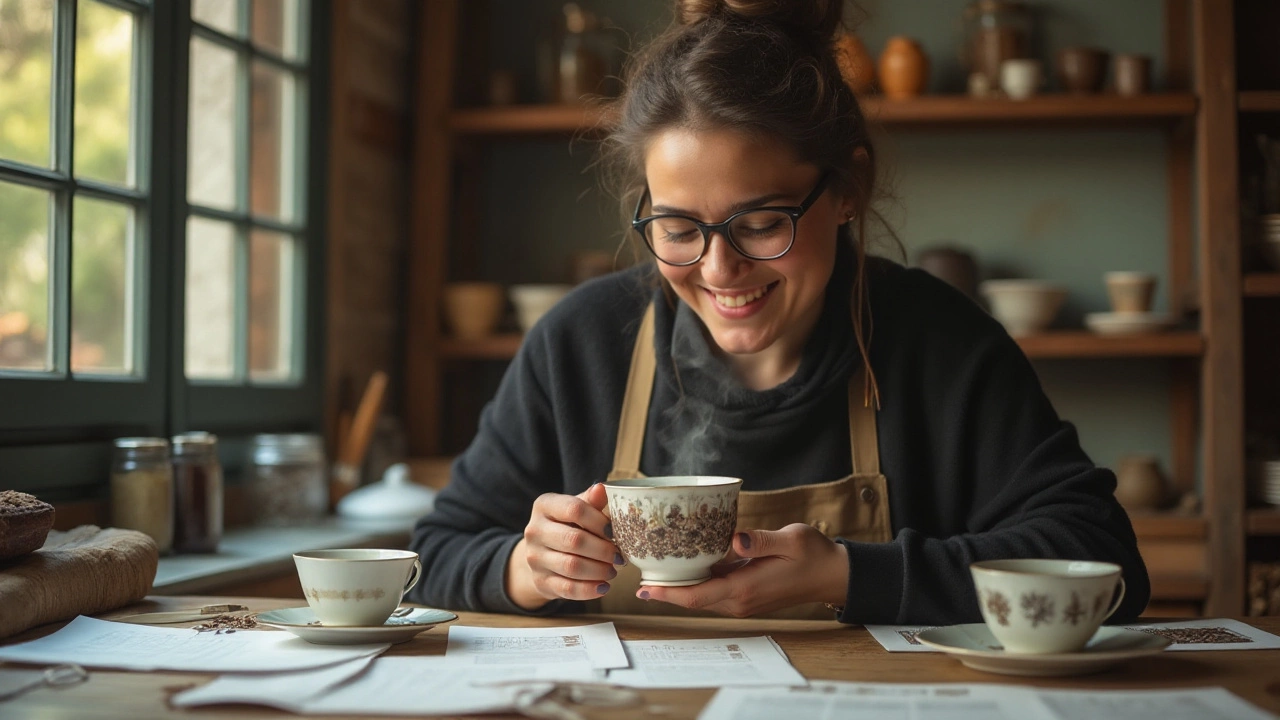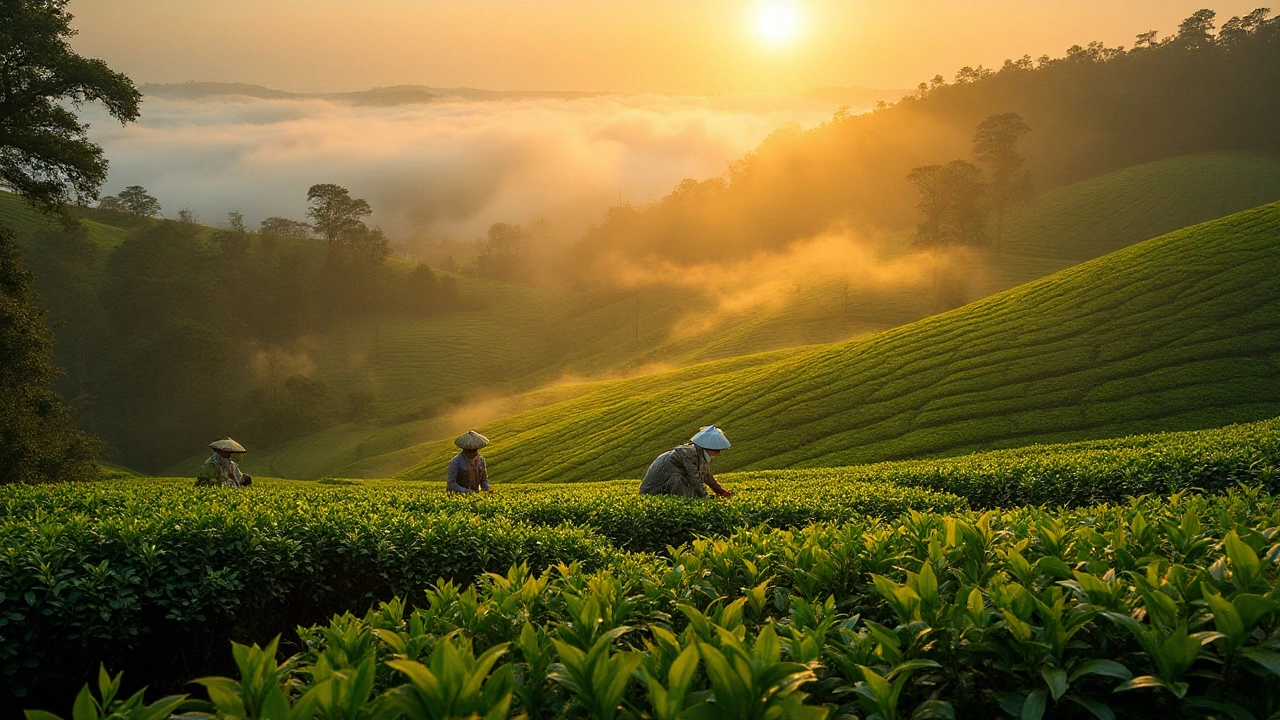Tea tasting is a captivating experience that goes beyond simply drinking a warm beverage. It’s an adventure into a world of complex flavors and aromas shaped by nature and nurture. Each cup tells a story, influenced by the environment where the tea is grown, right down to the method it’s brewed in your kitchen.
Have you ever taken a sip and found the taste unexpectedly different? Sometimes it’s the subtle interplay of factors beyond our immediate perception that can change the character of our tea. From soil composition and weather changes to slight variations in brewing technique, each has a hand in crafting your cup’s signature taste.
- The Science Behind Tea Flavors
- The Art of Tea Brewing
- Cultural Influences on Taste
- Tips for Enhancing Your Tasting Experience
The Science Behind Tea Flavors
When we dive into the intricacies of tea tasting, the first thing to understand is how diverse and rich the science of tea flavors can be. The journey of flavor starts in the soil where tea plants grow, absorbing minerals and nutrients, which give the tea leaves a unique taste. The geographical location, including the altitude, affects how tea plants grow. A higher elevation gives the leaves a slower growth rate, which often leads to a more complex flavor profile. The climate, such as sunshine, rainfall, and even mist, plays a crucial role too. This microclimate affects the levels of catechins, caffeine, and theanine, which are compounds that influence taste.
When it comes to processing, the magic happens. The way leaves are plucked, and their journey to become the tea you taste impacts the flavor dramatically. The oxidation process, which is either allowed or halted, defines types of tea like black, green, or oolong. This process changes the chemical structure of the leaf. For instance, black tea is fully oxidized, giving it a stronger and darker taste. In contrast, green tea skips oxidation, keeping it lighter and more delicate. Even the drying techniques, whether sun-dried or machine-dried, add another layer to the flavor profile.
Tea flavors are like a language spoken by the elements merging together. A fascinating part I'll never forget reading was about an old tea house's secret; each month, they would sample water from different sources — a practice ensuring precise flavor experiences. This reminds us that water quality, with its mineral content and pH level, can shift the taste of a brew. According to research from the Journal of Food Science, water minerals can either complement or overpower the natural flavors of tea, showcasing its importance in tea brewing.
The science behind flavors is also in how tea is stored. Exposure to light, air, and humidity can alter flavors over time. The compounds in tea continue to react even after processing and packing; oxygen and moisture can degrade them, which can lead to off-flavors or reduced freshness. Therefore, storing tea in airtight containers in a cool, dark place is often recommended to preserve its intended taste.
Understanding the science of tea flavors requires appreciating the entire lifespan of the tea leaf's journey from plant to cup. Every step impacts the final taste that fills your cup, making tea tasting not just an art, but a dance of nature and human touch. That's the science that makes each tasting experience unique and worthy of exploration.

The Art of Tea Brewing
The process of brewing tea is as unique and varied as the types of tea themselves. It's all about striking the right balance between water temperature, steeping time, and the quality of the leaves to unlock the full potential of flavors hidden in each leaf. When you dive into this art of tea brewing, it offers much more than just a routine—it's an experience where precision meets personal preference.
The first essential element is the water itself, which makes up the majority of your tea. Always start with fresh, filtered water to allow the flavors of the tea leaves to come through without interference from tap water additives. The temperature of the water is next on the list. For example, delicate green teas savor a bath in cooler water at around 70-80°C to prevent bitterness, whereas robust black teas can thrive in boiling water at 90-100°C.
The type of tea leaves you choose speaks volumes about the resulting brew. Loose-leaf tea often unveils more nuanced flavors than tea bags due to its ample room to expand and infuse. The rule of thumb is to use about one teaspoon per cup for loose tea. As the leaves unfurl, the magic begins, and your patience will be rewarded with a bright and flavorful cup.
Time, almost like a conductor in an orchestra, orchestrates the symphony of flavors. Different styles of tea require varying steep times. Green tea enjoys a short and sweet steeping, usually 2-3 minutes, while herbal teas might ask for a longer dip, around 5-7 minutes. The secret rests in not over-steeping to avoid astringency. Timing devices or even an attentive eye can ensure no second is wasted.
The vessel or teapot you choose also adds its character to the brew. Ceramics may retain heat longer, aiding in perfect steeping for black or oolong teas. Glass teapots, on the other hand, offer a visual delight as the leaves swirl and change the water’s hue. The vessel can be as much a part of the experience as the taste itself, enhancing the tea’s aesthetic quality.
"A perfect cup of tea is like a work of art that captures the spirit of the moment," says tea expert and author Sebastian Beckwith.
Lastly, personalization takes the steering wheel. Some might prefer their tea with a splash of milk or a hint of honey, while others savor it unadorned. The beauty of tea flavors lies in their flexibility and adaptability to each individual palate. This personal touch stems from experimenting and enjoying the variety that tea brings to the table. Nowhere else does one have such a personalized and flavorful journey that is as much about discovery as satisfaction.

Cultural Influences on Taste
The experience of tea tasting is not just a matter of biology and chemistry but is deeply intertwined with cultural practices that color our perception of flavor. Across various regions, the ways in which people prepare and enjoy tea reflect a rich tapestry of traditions that have been passed down through generations. Take, for example, the Chinese Gongfu tea ceremony, which places great emphasis on achieving balance and aesthetic pleasure. This process involves a series of steps carried out with precision and grace, transforming the tasting into an almost meditative practice. Such rituals undoubtedly cast a unique flavor in the minds of those participating, enhancing the taste through cultural storytelling and mindfulness.
In Japan, the tea culture leans into a stark contrast with the Chanoyu, or the Japanese tea ceremony, which underscores simplicity and tranquility. It's an art that values the beauty and imperfection of natural elements, rooted in Zen philosophy. This ceremony isn’t just about drinking tea; it’s about creating a moment that stands outside of time, where each sip becomes a meditative act. The tea itself, often a vibrant green matcha, is prepared with such deliberate care that every note is savored, attributed to the emphasis on detail that permeates Japanese culture.
Meanwhile, in India, the home of chai, tea drinking takes on a more communal and heartwarming role. Chai stands buzz with life, where spices like cardamom, ginger, and cinnamon are combined to create an aromatic brew that transcends the cup. Each ingredient tells a tale of the Indian subcontinent's history and the melding of various cultures over time. This environment fosters a social aspect, where tea isn’t merely a drink but a conversation starter and a way to forge connections. It's this sense of community and shared experience that enhances the flavor profile, making each taste a reflection of the social and historical context in which it’s enjoyed.
Research shows that cultural identity significantly shapes sensory perceptions. A 2020 study published in the Journal of Ethnic Foods highlights how the same flavor notes can be perceived differently across cultural backgrounds. The study involved blind-folded tastings of differently spiced teas by cultural groups. Statistically significant differences in preference were observed, correlating each preference with cultural familiarity and exposure rather than inherent taste alone. Such findings underscore how our cultural upbringing and surroundings shape our taste expectations and experiences.
"Tea is the ultimate mental and medical remedy and has the ability to make one's life more full and complete," writes Thich Nhat Hanh, a renowned spiritual leader, reminding us how deep the connection between tea and human experience runs."

Tips for Enhancing Your Tasting Experience
Embarking on a tea tasting journey can be truly rewarding, allowing you to dive deeper into your appreciation of this ancient beverage. To start, focus on the fundamental art of brewing. The temperature of your water is crucial, as different types of tea thrive under varied conditions. For instance, delicate green teas often require cooler water, around 70-80 degrees Celsius, while robust black teas can handle higher temperatures up to 100 degrees Celsius. Paying attention to these subtleties can transform an ordinary cup into an extraordinary tasting experience. Additionally, always ensure your water is clean and fresh, as any impurities can greatly affect the flavor profile of the tea.
The environment in which you enjoy your tea also plays a vital role. Creating a calm and uncluttered setting can help you focus on the flavors and aromas. Consider using a neutral teapot and cup set to avoid any overshadowing influences. It’s also important to let the tea breathe before tasting. Swirling the cup gently exposes the liquid’s aromas, preparing your senses for the tasting notes to come. Some enthusiasts even suggest embracing a meditative state to heighten your awareness of what each sip brings.
Many seasoned tea tasters recommend keeping a journal to document your experiences. By recording the various teas you've tasted, along with notes on flavor, aroma, and even the emotions they evoke, you develop a reference that enhances your understanding and appreciation over time. You might note patterns or preferences that emerge, helping refine your palate. If technology suits you better, there's a growing number of apps designed to assist with this digital journaling, offering community reviews and flavor profiles.
Engage all your senses during tasting. Before the first sip, observe the color and clarity of the tea, appreciating its hue. As you bring the cup to your nose, inhale deeply and identify distinctive aromas. Is it floral, fruity, or earthy? Finally, taste the tea in small sips to explore its texture and aftertaste. A useful exercise is to match your observations with taste wheels available online, which help you pinpoint specific flavors and aromas.
"Tea tasting is a fusion of art and science, a practice that enlightens as it entertains," describes renowned tea expert Jane Pettigrew.
Inviting friends to join your tea tasting adventures turns it into a social activity. Exchange notes, opinions, and preferences to uncover new dimensions. Having others' perspectives can introduce you to unique interpretations you may have overlooked. It’s a delightful way to learn and socialize, turning tea tasting into both a personal and shared experience. Hosting small tea-tasting gatherings can provide not only joy but also broaden your exposure to teas you might not have encountered on your own.


